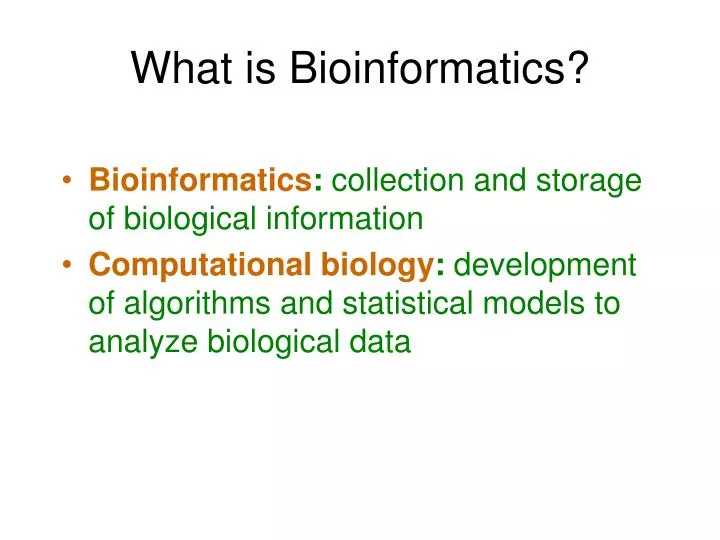An Unbiased View of Bioinformatics Tutor
Table of ContentsAll About Bioinformatics TutorLittle Known Questions About Bioinformatics Tutor.The Bioinformatics Tutor IdeasWhat Does Bioinformatics Tutor Mean?Bioinformatics Tutor Can Be Fun For Anyone
Of the total amount participants associated with the training, 80% were pupils from public higher education and learning organizations, while the remaining 20% originated from personal establishments. To get a certificate of participation, pupils were called for to attend at least 90% of the complete training hours. As a result of this need, a remarkable 95% of the individuals successfully obtained their certificates, having not only satisfied the minimum presence standards but additionally completed all assigned tasks throughout the training.
During the height of the COVID-19 pandemic, especially between June and August 2020, the task team was entrusted with organizing specialized training in bioinformatics. This training was specifically targeted at trainees from the research group Core for Research in Applied Computing at the Federal College of Pará (UFRA) The adjustment to remote discovering systems due to the pandemic produced a possibility to explore new training approaches and electronic devices that enhanced both reach and effectiveness.
This course was designed to supply an available yet comprehensive summary of Artificial Intelligence techniques, especially as used in bioinformatics (Bioinformatics Tutor). This digital layout allowed participation from pupils across Brazil, numerous of whom could not have had the chance to participate in in-person sessions.
Not known Factual Statements About Bioinformatics Tutor
A remarkable feature of this program was its focus on hands-on knowing. Around 50% of the complete training hours were dedicated to useful tasks where pupils constructed smart models and applications in a range of clinical domain names, consisting of genetics, molecular biology, and environmental data evaluation. Widely utilized structures and devices such as Spyder, Google Colab, Jupyter Notebooks, and Orange were incorporated right into the coursework. These platforms made it possible for pupils to engage in real-time information adjustment, version training, and algorithm trial and error.
The program drew in 80 participants in total. Sixty of them were affiliated with different higher education and learning organizations in the state of Pará, while the remaining twenty came from establishments situated in five other Brazilian states. This wide geographical depiction highlighted the nationwide rate of interest in bioinformatics and the expanding need for specialized skills in this area. By presenting Artificial Intelligence in a useful and pertinent context, the campaign served to bridge the space in between theory original site and real-world application, giving pupils with a strong structure for future study or employment in the field.
The training effort formed component of a more comprehensive academic outreach effort understood as the Bioinformatics when driving job. This project has, throughout the years, introduced lots of pupils to the world of bioinformatics and computational biology. The events held under this umbrella initiative have actually occurred throughout multiple areas and years, as summed up in Table 1 (List of events, places, years, and total varieties of pupils and teachers)
Several of these teams, at first brought together by their participation in training events, have since gone on to produce independent clinical research in collaboration with regional scholastic organizations. The training not just cultivated scientific reasoning within the context of bioinformatics yet additionally triggered joint connections that extended past the training atmosphere.
Some Of Bioinformatics Tutor
The same group, excluding IH and RR, likewise acted as tutors for the useful training modules. Funding for the job was offered via the grant 88887.200562/ 2018-00 from CAPES.
The Federal University of Pará's Workplace of Study (PROPESP/UFPA) also gave financial backing, particularly for the manufacturing of the final manuscript. The authors declare no business or financial problems of rate of interest that could have affected the research. In addition, all interpretations and point of views shared in this write-up are only those of the authors and do not necessarily reflect those of their particular establishments, the author, editors, or reviewers associated with the magazine procedure.

The 15-Second Trick For Bioinformatics Tutor
From an instructional viewpoint, the mentor strategy used in the training was deliberately interactive. Courses were carried out in a way that urged trainee participation and conversation, exceeding rote memorization to explore just how concepts are developed, used in day-to-day live, and tested in scholastic settings. The instructional ideology concentrated on nurturing both solid and having a hard time students, giving personalized assistance, and building confidence via continual mentorship and perseverance.

Each group, being composed of around 36 participants, was supported by 3 advisors-- most of whom were postdoctoral researchers with specific expertise. These coaches not only assisted make the team tasks but likewise promoted their execution, guaranteeing that each study question was both relevant and appropriately challenging. The goal was to give a biologically sensible context that participants can check out look at this now with open-ended objectives and accessibility to curated datasets.
For additional insights right into the method and outcomes of this Bioinformatics Tutor project-based understanding method, viewers are routed to S1 Text, that includes thorough summaries of the instructional framework, analysis techniques, and task themes used in the training sessions.
Rumored Buzz on Bioinformatics Tutor
Of the total individuals included in the training, 80% were pupils from public greater education organizations, while the staying 20% came from exclusive institutions. To qualify for a certificate of involvement, students were called for to participate in at the very least 90% of the total training hours. Especially, past the pupils that enlisted in the training sessions, 7 experienced teachers got involved in providing the programs, while 3 dedicated research professors worked with the total training process. About 50% of the overall training hours were dedicated to useful activities where students developed intelligent designs and applications in an array of clinical domain names, including genetics, molecular biology, and environmental data analysis. The training not just cultivated scientific thinking within the context of bioinformatics but also stimulated collaborative connections that expanded past the training atmosphere.
Comments on “The Main Principles Of Bioinformatics Tutor”